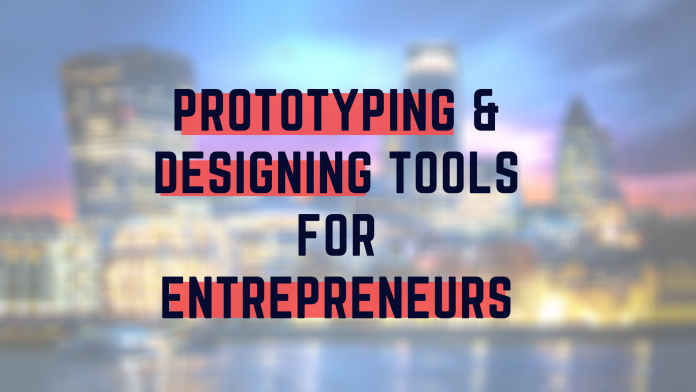One of the most popular phrases in the world of design from IDEO states that “ If a picture is worth a thousand words, a prototype is worth 1000 meetings”. Whether it is plain experimenting or turning your vision into something tangible, prototypes (low, medium, or high fidelity) assist in testing and building while preserving overall design consistency.
As designers are bound to design things that are described to them by clients, not all actually understand what the requirements really are. This is then followed by a series of meetings, emails, or phone conversations to reach their final design which truly is a hassle. All these problems can be circumvented by using prototyping tools.
Prototyping tools allow designers and clients to collaborate better while being in the same context rather than having conflicting perspectives. The clients get a visual overview of what is actually going to be made. It helps teams to build understanding, to explore options and barriers that only become visible when you build and test something. At the end of the day, prototyping tools become a platform for full creativity and experimentation for the product team.
The biggest benefit of prototyping tools is the risk, the sooner we fail, the faster we would learn. When you fail with your mockup, you land softly — there’s always the chance to validate things that work, iterate, and improve. Else, once we start sailing on a boat in the wrong co-ordinates, we will never reach the shore.
How we use Prototyping tools?
We believe driving customer engagement through user experience is important. Preparing mockups or wireframes of an app consumes a lot of time for our designers and also creates a lot of back and forth with the clients which could possibly harm our relationship with our clients.
How to choose the right prototyping tool?
Choosing the right tool is the key to describing your thoughts and collaborating better with your clients. With the abundance of so many online prototyping tools, choosing the right one is not an easy task. Every tool is different from each other as it lacks or has a new feature to stand out from the rest.
In order to choose the right prototyping tool for designing, there are a few factors that need to be evaluated for that tool to check whether it fits our needs or not.
- Learning Curve
- Sharing
- Usage
- Ease of use and comfort
- Cost
- Fidelity
Let’s go through the top Prototyping & & Designing tools for Entrepreneurs
- Axure
- InVision
- Google Web Designer
- Concept.ly
- Proto.io
- Sketch
- Gridbox
- Webflow
- OmniGraffle
- MockFlow
- Flinto
- RelativeWave Form
- Justinmind
- Mockingbird
- POP
- Balsamiq
- Moqups
- Tablika
- Principle
- Marvel
- Atomic
- Precursor
- Pixate
- Designmodo
- UXPin
- Avocode
- Pinegrow Web Editor
- Pidoco
- Rawson kit
- Xiffe
- Fluid UI
In conclusion, these prototyping tools have their own special advantages, specialties, and suit different needs. Admittedly, we have not included a lot of other prototyping tools for UI/UX designers. There are lots of other tools out there, most of which have the same features as mentioned in the above prototyping tools. Some honorable mentions are Moqups, UXPin, Prototype on Paper, Proto.io, and Flinto which have some unique features and ease of use as compared to the above.
Ultimately, it all comes down to choosing the one that works best for you. If you are a seasoned designer working on complex animations, the Principle might work best. Or, if you are a design newbie, then Balsamiq Mockups should be your go-to.
We come from a time where mockups were made in paper and show to the clients, and now with this leap in technology we are capable of doing so much more. Going beyond the boundaries of technology, down the line, we can expect to see more innovations and enhancements not just in the UX prototyping segment, but in the design industry collectively.


